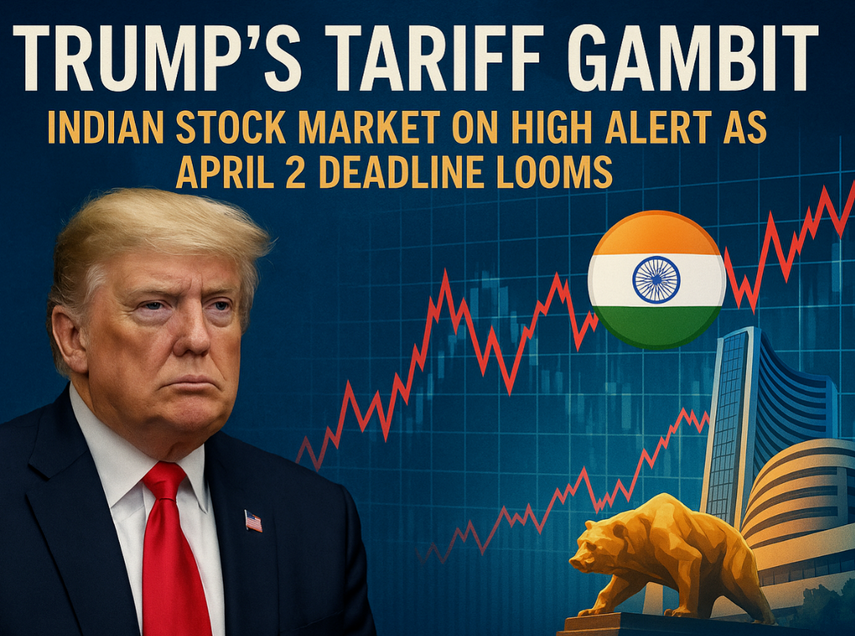
US President Donald Trump has promised to unleash a fresh round of tariffs targeting both allies and adversaries alike, signaling an aggressive stance on trade policy as he approaches what he has dubbed “Liberation Day” this Wednesday.
New tariffs in play
Trump’s latest salvo of tariffs would follow a pattern of escalating trade measures throughout the year.
In February, he first announced a 25 percent tariff on goods from Canada and Mexico, linking these measures to his broader immigration agenda. His demand for stricter action on illegal immigration and the smuggling of fentanyl from these nations prompted the initial tariff action. Though the administration postponed implementation to March and granted temporary relief to the auto industry, the fate of these exemptions remains uncertain as Wednesday approaches.
China has not received such reprieve. The Trump administration imposed an additional 20 per cent tariff on Chinese goods, alleging that Beijing’s role in the global fentanyl trade justified this action. The world’s second-largest economy has already faced a range of tariffs over the years, but this latest round further solidifies the tense trade war between the two countries.
In mid-March, tariffs on steel and aluminum imports, set at 25 per cent, took effect. Now, on the horizon, imported automobiles will be subject to a 25 per cent tariff starting on April 3, 2025, at precisely 12:01 am Eastern Time.
In addition to these industry-specific measures, Trump is reportedly preparing to impose blanket tariffs on buyers of Venezuelan oil, with new restrictions potentially taking effect as soon as Wednesday.
What to expect?
While Trump has not yet detailed the full scope of his next round of tariffs, analysts expect that the President’s actions will focus on around 15 per cent of the US’s trade partners, a group often referred to as the “Dirty 15” by Treasury Secretary Scott Bessent.
These nations, which the US Trade Representative (USTR) has targeted in previous investigations, include major global players such as China, the European Union, Mexico, Vietnam, Taiwan, Japan, South Korea, and Canada.
Reports suggest that Trump’s reciprocal tariffs will factor in not only the levies these countries impose on US goods but also other barriers such as value-added taxes and digital service taxes. This means that nations already in the crosshairs of Washington’s trade policies may face even tougher restrictions on their exports to the US.
Sector-specific tariffs may also be unveiled, as Trump has previously signaled plans to target pharmaceuticals, semiconductors, and lumber – industries he claims have been adversely impacted by unfair foreign practices.
Retaliation on the horizon
US trade partners have been quick to retaliate against Trump’s moves. China, for instance, imposed counter-tariffs of 10 per cent and 15 per cent on US agricultural goods, including soybeans. Meanwhile, the European Union has responded to the US’s steel and aluminum tariffs with a threat to levy duties on up to $28 billion of US goods, ranging from bourbon to motorcycles.
The EU’s retaliatory measures were initially set to go into effect in early April, but they have been delayed until mid-April to allow time for further negotiations. However, tensions have risen in recent weeks, with Trump warning of up to 200 percent tariffs on European wines and spirits – a move that could affect both foreign producers and US businesses alike.
Canada has also responded to Trump’s trade actions, imposing tariffs on approximately $42 billion worth of US goods, including steel, aluminum, and electronics. Mexico, meanwhile, is reportedly holding back on a full response until early April, though officials have signaled they are preparing for retaliatory actions of their own.
What next after April 2 tariffs?
Trump’s trade actions can continue past Wednesday, with the president already having ordered new probes into lumber and copper imports.
These could form the basis for further charges.
And the USTR has an ongoing investigation into China’s practices in the maritime and logistics sectors as Trump looks to “resurrect” American shipbuilding.
The trade envoy’s office has found that Beijing’s policies warrant action, proposing remedies like port entrance fees of up to $1.5 million for Chinese-built ships.
But businesses are contesting the plan, warning of higher costs and port congestion as carriers seek to avoid paying new fees.
Similarly, a series of reports are due Tuesday under an “America First Trade Policy” that Trump signed on his inauguration day. These could lead to more trade actions.
Deliverables include the results of an investigation on the “Phase One” trade agreement marking a truce in Washington and Beijing’s escalating tariffs war in Trump’s first presidency.
The order also called for export control recommendations to secure US technological advantages and a probe on the US-Mexico-Canada trade agreement.
It sought a review of proposals surrounding permanent normal trade relations with China as well.







